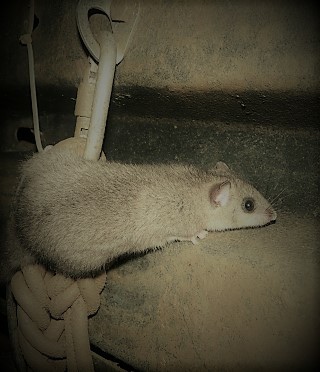Contact Us
South Gloucestershire Branch
Chipping Sodbury
Tel: 07585 124939
Onsite: 07585 124939
For further information or if you need help and advice contact your nearest branch and talk with your local pest control professional. We are always happy to help.


Pestbgone Limited
16 Churchilll Drive
Marlow, Buckinghamshire
SL7 1TW
Buckinghamshire
Marlow
Office: 01628 473062
Onsite: 07728 314363
South Gloucestershire
Chipping Sodbury
Office: 07585 124939
Onsite: 07585 124939
Our Services
Registered in England and Wales.
Company No: 13370531
VAT No: 364671477
Registered Address: The Mews, Hounds Road, Chipping Sodbury, Bristol, South Gloucestershire GL8 8UL
All Rights Reserved © 2024 Pestbgone Ltd








Glis Glis
In appearance, the glis glis is like a small version of the grey squirrel. The head and body are about 150mm (6") long and the bushy tail is about 125mm (5") long. The fur is silvery grey, shading to a light colour underneath and there is a ring of black hair around each eye.
The animal is common in Europe, however is not native to Britain. It was deliberately introduced into Tring Park in 1902 and has spread into the surrounding area. The extent of the spread is not fully known, however t is thought to be no more than about a 30 mile circle from Tring, although there have been unconfirmed reports of sightings at much greater distances. Today, the introduction of new, wild, species is prohibited by environmental laws, but at that time no one had any concern for the long term implications of releasing what is, in effect, a pest into the UK. Glis Glis cause considerable damage to trees and crops, and from the mid 1920's onwards were causing damage in houses, particularly by gnawing woodwork and electric cables.
The common name "edible dormouse" dates from Roman times. The Romans farmed them by keeping them confined and fed a diet to encourage them to become fat. They were then served as an exotic delicacy at banquets. Like many small animals, Glis Glis can appear to be attractive and entertaining. However, they are definitely not to be regarded as a pet or a cuddly toy. They have been described as sulky, standoffish and at times bad tempered. Once fully emerged from hibernation they are very nimble and fast on their feet.
Glis Glis are nocturnal and in houses the first signs of infestation will either be noises heard in the loft at night, or signs of damage in the loft or outbuildings. The animals hibernate for long periods (the German common name for them is "Seven months" because they hibernate for the 7 months October -
Only limited research has been done on the life cycle of the UK population. It is thought that Glis Glis emerge from hibernation in May and that a litter of 2 -
The small litter size and the small number of litters per year, together with action of natural predators mean that Glis Glis do not multiply out of control the way that rats and mice do. However, they are slowly extending the infested area and this will be aided if there is a tendency to warmer spring and summer weather.
As Glis Glis are regarded as pests, it is illegal for householders to release them back into the wild.
There are very strict laws about how Glis Glis must be caught and dispatched, everyone involved must work under strict Government license terms. Do not be tempted to control Glis Glis without recourse to a licence or a company working under such licence terms. Otherwise you may commit a criminal offence.
Please note that the terms of the licence is to kill the animals caught by specific means -

WikiPest
Everything you need to know about
Glis Glis



 CONTACT BUCKINGHAMSHIRE
CONTACT SOUTH GLOUCESTERSHIRE
CONTACT BUCKINGHAMSHIRE
CONTACT SOUTH GLOUCESTERSHIRE
Start by selecting an area.








